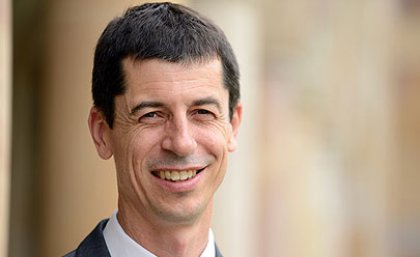
SCIENTISTS are closer to unravelling a 40-year-old genetic mystery, after identifying a further 13 regions of the human genome linked to a debilitating form of arthritis.
Professor Matt Brown’s group at The University of Queensland Diamantina Institute has published its latest findings on ankylosing spondylitis (AS) today in Nature Genetics.
The syndrome causes pain, stiffness and disability, and is almost entirely genetically determined. It affects about 80,000 Australians, or 0.5 per cent of the population.
“This common form of arthritis causes the immune system to attack the spinal and pelvic joints,” said researcher Adrian Cortes, a PhD student at the UQDI and lead author on the latest publication.
“Susceptibility to the disease is predominantly genetic and there are no current treatments to induce disease remission.
“Unlike other forms of arthritis where inflammation leads to bone loss, AS results in bone growth. Consequently it can cause the spine and/or pelvis become fused into a fixed position.”
Professor Brown said the latest work had increased understanding of the genetic links between AS, inflammatory bowel disease and the skin condition psoriasis.
“In combination, these conditions affect between two and three per cent of Australians,” Professor Brown said.
“Our work partially explains why these diseases commonly co-occur in the same patient and in families.”
In the past four years, Professor Brown’s UQDI research group has been involved in identifying all but one of the genetic variations which affect susceptibility for AS.
The team collected genetic material from more than 10,000 AS patients to map most of the common genetic variations responsible for the disease.
The latest discoveries have doubled the number of known regions of the genome that contribute to risk for AS.
“Our research will assist in developing potential treatments,” Mr Cortes said.
“Some of these already are in clinical trials, thanks to the UQDI team’s previous discoveries.”
Professor Brown said the first clues to understanding AS came in the 1970s, when it was discovered that nearly all patients suffering from the disease carried a particular gene called HLA-B27.
“The link between AS and HLA-B27 is one of the strongest-known genetic associations of any common disease,” he said.
“The discoveries we have made here at UQDI in the past few years have made its role in causing AS much more clear.”
The latest work was undertaken in collaboration with scientists and physicians from 17 countries across Europe, East Asian, North America, Australia, New Zealand and Latin America.
Mr Cortes thanked the many patients who contributed their DNA material for the study.
“We hope our work will improve the treatments available for these patients in the near future,” he said.
Professor Brown last month won Queensland’s top science prize, the $1.25 million Premier’s Science Fellowship.
The University of Queensland matched this dollar-for-dollar, to allow Professor Brown’s team to further its work in the next five years in identifying the genetic markers for rheumatoid arthritis and tuberculosis.
“This study is a big step forward in solving the causes of this common disease, and is very likely to lead to new treatments for AS and related diseases in the near future,” Professor Brown said.
“It shows the power of modern genetics to transform research in diseases which have challenged standard research approaches for decades, and bring about real advances for patients.”
Media contact: Andrew Pentland, UQDI, +61 7 3443 7026, +61 (0) 411 779 819, a.pentland@uq.edu.au


